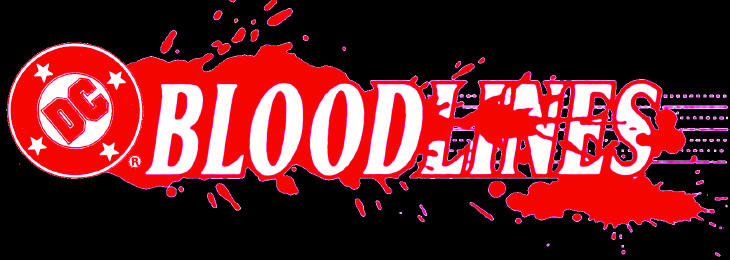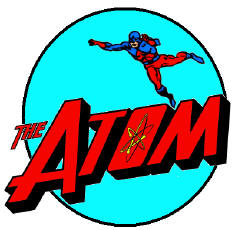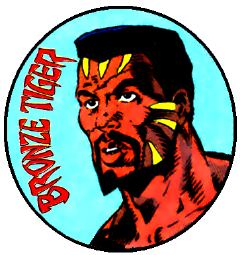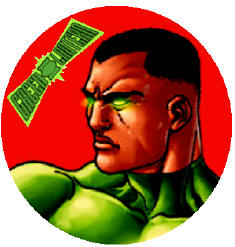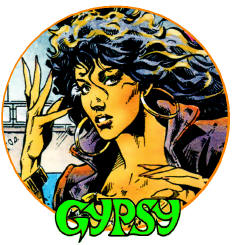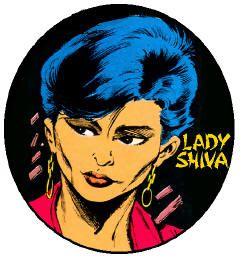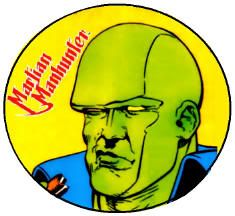Sunday, March 31, 2024
Comic Reader Résumé: Late April, 1986
Saturday, March 30, 2024
Comic Reader Résumé: Early April, 1986
Wednesday, March 6, 2024
Comic Reader Résumé Podcast #20
(March 1986)
Internet Archive ◫ MP3 ◫ Spotify
ré·su·mé [rez-oo-mey, rez-oo-mey] noun 1. a summing up; summary. 2. a brief written account of personal, educational, and professional qualifications and experience, as that prepared by an applicant for a job.In Comic Reader Résumé, I use Mike’s Amazing World of Comics to travel back through time via his virtual newsstand to the genesis point of my lifelong collecting of comics. From there, I can offer a “work history” of my fandom through my active purchasing of (relatively) new comic books beginning in January of 1982, when my interest in the medium went from sporadic and unformed to routine on through compulsive accumulation. To streamline the narrative and keep the subjects at least remotely contemporaneous, I will not generally be discussing what we call back issues: books bought long after their publication date. Sometimes, I will cover a book published on a given month that I picked up within a year or so that date, and I give myself an especially wide berth on this aspect in the first couple of “origins” episodes. We’ll get more rigidly on point as my memories crystallize and my “hobby” spirals out of control into the defining characteristic of my life (eventually outpacing squalor and competing neuroses.) It’s part personal biography, part industry history, and admittedly totally self-indulgent on my part.
This episode includes Avengers #268, Conan the Barbarian #183, Elvira's House of Mystery #4, G.I. Joe a Real American Hero #48, Marvel Saga: the Official History of the Marvel Universe #7, Masters of the Universe #2, The Official Handbook of the Marvel Universe Deluxe Edition #7, Spectacular Spider-Man #115, Uncanny X-Men #206, Web of Spider-Man #16, X-Factor #5, and more!
“Transcripts”
- March, 1986
- #CRRésumé?
- rolledspinepodcasts@gmail.com
- Comment on Résumé page or Rolled Spine Podcasts.
Sunday, March 3, 2024
Comic Reader Résumé: March, 1986
I'm confident that my half-brother had Alpha Flight #35, because that Shaman versus Talisman cover with the reanimated skeletons is tight. Nobody seems to know for sure who drew it though, and the collected editions stopped about five issues short of this one in 2016. To me, it's new series artist David Ross, looking a lot better here than on the Gerry Talaoc inked interiors, reminding me that we don't talk enough about how he butchered early Mike Mignola work. Talking of whom, Mignola is often credited with participation in this cover, and yeah, skeletons, but I just don't see it. I'm pretty sure that just Kevin Nowlan inks with more fidelity to Ross' linework than he's usually associated with. He doesn't always completely redraw an image, you know. Oh, the interiors? It's a Marina spotlight featuring Sub-Mariner in Atlantis. Who cares?
I think the cover art for Sergio Aragones Groo the Wanderer #16, in which the barbarian prepares to hack at a fly on his own nose with a short blade, was used as a house ad. Like its inspiration Conan, I read a lot of these comics, but they're all so similar that I can rarely recall one from another. Again, I mostly mention it to fill out this week.
The Marvel Saga, the Official History of the Marvel Universe #7 continues to answer the question of how I was relatively familiar with the backstories of Tony Stark and James Rhodes despite rarely even flipping through Iron Man comics growing up. Knowing where their moneymaker was, the Brent Anderson cover highlights J. Jonah Jameson's crusade against Spider-Man. A lot of this issue was taken up by recaps of Human Torch and Ant-Man solo stories, necessitating the disclaimer that I never bought a single issue of this series-- I only read my brother's copies.
The Official Handbook of the Marvel Universe Deluxe Edition #7 announced on the cover that you wouldn't be getting any headliners by fronting with villains, and it is Khoryphos to Magneto after all. But you did get some nice entries for minor characters. Joe Kubert on Killer Shrike, Sandy Plunkett's Hannibal King, Kerry Gammill's Misty Knight, Bill Sienkiewicz's Legion, Mike Zeck's Living Laser, Paul Smith's Lockheed, Art Adams' Longshot, and especially Mark Beachum's Madame Masque. Walt Simonson also got a lot of play on Kurse, Loki, and Lorelai, plus David Mazzuchelli's Kingpin. I'm also weirdly into the various Kree militia uniforms. Am I secretly super sentai sensitive or something?
Avengers #268 struck me as familiar, despite have a generic cover with the Growing Man on it. Or rather, the big orange and purple guy that I thought was a Kree robot or something and had to look up. I knew it wasn't one of mine, but my brother was even less of an Avengers guy than I was. Cracking the cover, the splash has a Buscema/Palmer shot of Captain America crouching in a cave with a flashlight while Jarvis looks on. Yeah, yeah, okay. The story is titled "The Kang Dynasty," and hey, how's that going? The image of a downed original golden armor Iron Man confirmed that I knew this one, but that leads to appearances by Kang and Space Phantom, who were not draws to us. Gah, what was it with this one? Eight pages in, and finally, the Dire Wraiths showed up. My brother liked Dire Wraiths. Mystery solved.
Conan the Barbarian #183 offered "Blood Dawn," a Jim Owsley, John Buscema, and Ernie Chan collaboration about vampire zombie priest things from out of Beastmaster. I didn't buy it on purpose, so it was likely a three pack or my brother again. The story ended with a black man kissing a hateful white woman's foot, and lil' bro had transgressive tastes.
Finally, Elvira's House of Mystery #4! As I've mentioned before, I watched Movie Macabre most weekends, caught Elvira on stuff like beer commercials and Halloween episodes of shows like The Fall Guy, and would have her "moon bathing" poster on my wall in a few years. So of course I had to talk about her first comics run, which I fished out of quarter bins early and fairly often. That said, this is one of the few times I can discuss an issue I actually bought brand new off the stands. Or actually, I'm pretty sure I got this one at my first semi-proper comic shop-- the one inside the South Houston flea market that had it's own doors and walls and posters and display shelves and a cash register and everything. The first issue was a double length, double priced horror anthology in which Elvira only cameoed, so it's possible I rejected it at a mall bookstore. But I got really excited when I saw Mark Beachum & Dick Giordano's "Peek-A-Boo" cover. Besides both artists being masters of drawing sexy ladies, they also dodged the likeness issue that even Brian Bolland stumbled over by having Elvira cover a third of her highly recognizable face with her hands. The layout of the cover is strikingly similar John Byrne's green-foil enhanced one for The Sensational She-Hulk #50, down to her eyes & nose being covered up by the logo.
So out of all the books I could have gotten on this relatively rare opportunity to specialty access, I got one that was technically available on the newsstand, though I rarely if ever saw it there. But again, I wasn't a short story collection guy until this century, and Elvira was literally only on the splash page. I might have been put off forever, except it was a really great issue, actually. The lead story was by Heather Kilgour, with inks by Jim Fern and script by Rory Metcalf and Gael Montgomery. Most of these people only have a single credit in the comics industry, but Kilgour went on to become a noted illustrator who went on to work in the art department for revered fantasy films like Peter Jackson's Lord of the Rings trilogy and The Lion, the Witch and the Wardrobe. The art is lovely, and the gothic romance story certainly stands out in this volume. A little Trevor von Eeden, some Steve Leialoha, the art is worth the price of admission on its own.
Next comes a Cain pin-up by Shawn McManus in full Bernie Wrightson mode, surely one of his most fantastic pieces. The second and final story is by Dennis Yee, whose credits are also sparse and mostly restricted to the 1986-87 window on a little known indie book for Elite Comics called Seadragon. Like Elvira, I saw one or two of those in the Marauder Books quarter bin, and Yee could have used the Jim Fern inks there that he enjoyed here. The story "She Knows... Someone Is Watching Her" is extremely prescient, about an independent African-American woman whose life is gradually made smaller and more fearful by an overweight white incel who stalks her. Aside from the Bronze Age art style, you'd think this tale was produced today, and it made an impression on me.
G.I. Joe a Real American Hero #48 had a Mike Zeck Zartan cover, so I showed up for it. The whole issue is about mistaken identity. Snake-Eyes in his latex face mask looking like a regular G.I., the guy people think is Zartan isn't, the guys people think are Joes are actually Zartan. And nobody knows who new recruit Sgt. Slaughter is, but they mess around and find out. I know he he is: besides being a famed WWF wrestler, he was also one of the few celebrities to follow me on Twitter.
Marvel Tales #188 reprinted 1967's Amazing Spider-Man #48, in which a younger guy with a full head of dark hair took over the role of the Vulture. It's from the classic team of Stan Lee and John Romita, but don't ask me why I felt the need to buy this specific issue. Three-pack strikes again?
I strongly associate Uncanny X-Men #206 with the apartment my father's family was living in when I first started visiting them on odd weekends. My father had this big, ornate, uncomfortable antique couch that I maybe read this on? Also, he was still a bohemian age of aquarius type, and my half sister still has major woo-woo hippy dippy vibes to this day. The babymama I liked when I saw her, but she mostly dipped out to the bedroom with her wine and Anne McCaffrey books. I think my half-brother was living with his mother at the time, so a fellow weekend traveler? Anyway, based on comics chronology, my father's family came by and wrecked my place around Christmas, and I was reading my half-brother's John Romita Jr. drawn Freedom Force battle that Spring.
At the mall bookstore, I flipped through the collector's item premiere issue of The Green Lantern Corps #... 201? Yeah, this wasn't fooling anybody. And despite trying to rebrand as a team book, this was just a bunch of goofy looking corpsmen with the same powers and costume... and one's a chipmunk now? No sir, you can keep that. It's going to be another decade & a half before I'm making time for chipmunk protagonists in my comics again. I'm a serious comic book collector, don't you know?
The All-New, All-Different Peter Parker, the Spectacular Spider-Man #115 is another comic read on a delay. I don't know if it was a three-pack, one of my bro's books-- whatever. I just know that I'd stopped actively collecting this book, but reads this issue within a year or two of release. I shouldn't have waited, since it's a Peter David story with Mark Beachum art, only slightly toned down by Bob McLeod inks. Maybe not the best call, given the unusually unambiguous attempted r-a-p-e that starts the issue. That was skeevy enough without later cutting to Felicia Hardy prancing around in material thin enough to be full-body pantyhose. But tootie-fruity, Spidey gives good booty, so there's equal time in place. We've got Dr. Strange, we've got a dude with a two foot mohawk nearly a decade after the days of punk, it's all good.
Maybe one of the best criticisms of the Layton/Guice run on X-Factor that I can offer comes specifically from #5, which introduces the new super-group The Alliance of Evil, made out of threats from previous issues. What do I remember most? Not the team-- but the sequence where a largely hairless Hank McCoy goes shopping for a new business suit. I'm the target audience for this hot new book, looking at a Beast overdosed on depilatories, dressed like Herb Tarlek with a worse haircut-- wondering why Marvel thought this was what I wanted to read. Just pages of boring post-grad X-Men I was already suffering through in Marvel Saga and my brother's cut rate low grade back issues, and they're hanging out in a regular gym, not a Danger Room. They're talking on the phone, attending business meetings, hanging out with Rusty, Skids, and Artie. The lousy super-villains that didn't make an impression in the first four issues don't even show up until page 17. As I understand it, the last page reveal that the arc's mastermind was the Dardevil villain The Owl was so underwhelming that editor Bob Harras had the incoming replacement writer create a brand new foe, and the artist redrew them in silhouette to tease their full debut. Didn't mean much to me then, though. That'll change for the greater X-title buying public.
I've repeatedly brought up issues from Miller & Mazzuchelli's "Born Again" arc that I did not buy at the time, but Daredevil #232's nationalistic "God and Country" really stands out. I know that I gave this a toss at the neighborhood 7-11, but just like that one Alan Moore Swamp Thing I got, I just knew that this was too mature for me at that time. Too complex, over my head, save it for later. But Nuke's paramilitary rampage and that iconic final splash of Daredevil back in costume was making me itchy.
Little bro bought Star Comics' Masters of the Universe #2. The DC mini-series was too grown up Alfredo Alcala gritty Conan-looking for my taste in 1982, and past-prime Ron Wilson drawing Transformers that turned into rocks... excuse me, meteorites, was too corny kiddy. Bro had some of those rock figures, as in dumb as. Or add an additional "s," but I'm trying to keep it clean here.
"Don't miss the 1st Issue in Web's daring new adventures into mystery and suspense!" announced a a large yellow-tipped cover explosion with heavy emphasis on the "1st Issue." This was Web of Spider-Man #16. You guys literally had an actual first issue barely over a year earlier, and yeah, we noticed that the only point was to add a third Spidey monthly with Charles Vess covers. This title was always the least among unequals-- the directionless title with the worst creative teams. But hey, at least it's a new team, unlike the Green Lantern scam.
Technically, David Michelinie had been writing since #8, halfway to this point, but he only did a two-parter and split... except he came back with #14, so this was his third consecutive issue. It isn't even the start of a lame multi-title story arc, which comes next issue. Nope, it's just Mark Silvestri's first issue in a whopping seven month run, and he skips #21. Also, Michelinie leaves with #24. I don't know if little bro got suckered, or if he just liked the horror-themed cover with a pitchfork skewering Spidey's mask while another maniac with a hand scythe stalks a couple in a nighttime field. The interiors are just Spidey versus MAGA rednecks. Sorry, rednecks and a super-villain called Magma. You can't see me shrug. And again, technically this issue continues into the next, which does officially start the "Missing in Action" arc, but I already mentioned the shrug.
Let's wrap a lackluster month with West Coast Avengers #10, the cash grab second Avengers title that at least had a few more reasons to exist than Web of Spidey. You don't necessarily see it with this unnecessary issue, though. Another lil' bro buy, I guess for the villainous Griffin, but maybe also Headlok? Chalk it up to youthful indiscretion.
